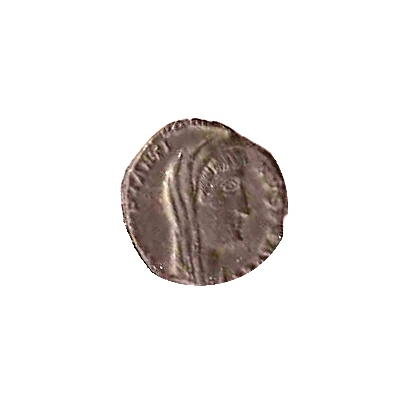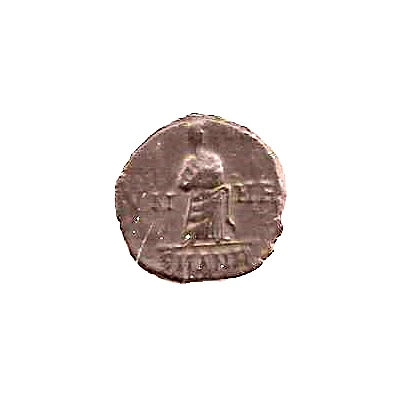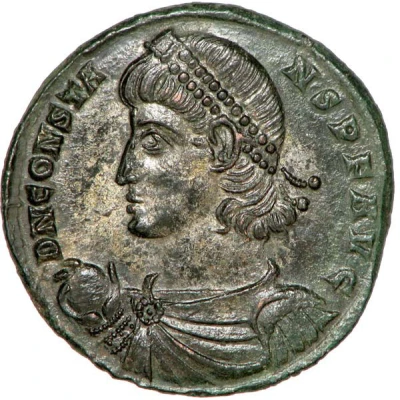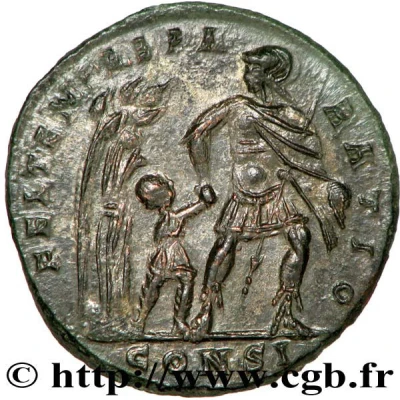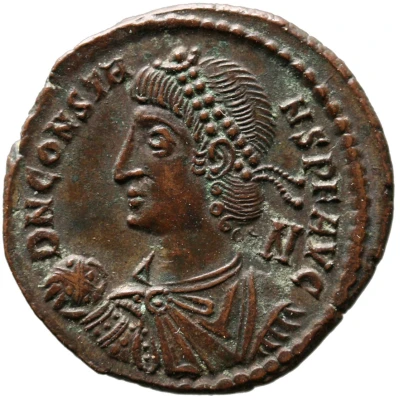


© Münzkabinett - Wien Kunsthistorisches Museum (CC BY-NC-SA 3.0)
Nummus - Constantius II FEL TEMP REPARATIO; Rome
| Bronze | 4.36 g | 22 mm |
| Issuer | Rome › Roman Empire (27 BC - 395 AD) |
|---|---|
| Emperor | Constans I (337-350) |
| Type | Standard circulation coin |
| Years | 348-350 |
| Value | Nummus (1⁄7200) |
| Currency | Solidus, Reform of Constantine (AD 310/324 – 395) |
| Composition | Bronze |
| Weight | 4.36 g |
| Diameter | 22 mm |
| Shape | Round (irregular) |
| Technique | Hammered |
| Orientation | Variable alignment ↺ |
| Demonetized | Yes |
| Updated | 2024-10-04 |
| Numista | N#401732 |
|---|---|
| Rarity index | 95% |
Reverse
Constantius II, nimbate, draped, cuirassed, galloping right, thrusting spear at two barbarians with right hand and holding shield on right arm; barbarians wearing pointed caps, kneeling, raising both arms.
Letter in left field.
Mintmark and officina in exergue.
Script: Latin
Lettering:
FEL TEMP REPARATIO
N
Unabridged legend: Felicitas Temporum Reparatio.
Translation: The restoration of happy times.
Interesting fact
The Nummus - Constantius II (FEL TEMP REPARATIO; Rome) coin was part of a large-scale currency reform implemented by Emperor Constantius II in the 4th century AD. The reform aimed to address the inflation and economic instability of the Roman Empire by introducing a new standardized system of coinage. The Nummus coin, which means "small change" in Latin, was introduced as a replacement for the older and more valuable coinage, and it quickly became the most widely used coin in the empire. Its design featured the emperor's image on one side and the goddess Felicitas (representing good luck) on the other, symbolizing the emperor's efforts to restore prosperity and stability to the empire.
